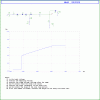transgalactic
Banned
how to build a circuit that acts like this graph
https://i32.tinypic.com/ivfipx.gif
i am only allowed to use a linear components
a simple diode,simple E1 source simple E2 source
simple resistor
i know that the middle climb is a charging capacitor
there so many switching of modes
i dont know how to start thing of that?
i dont want the solution right away
i want guidance so by answering your questions i will get to the
solution myself
https://i32.tinypic.com/ivfipx.gif
i am only allowed to use a linear components
a simple diode,simple E1 source simple E2 source
simple resistor
i know that the middle climb is a charging capacitor
there so many switching of modes
i dont know how to start thing of that?
i dont want the solution right away
i want guidance so by answering your questions i will get to the
solution myself






